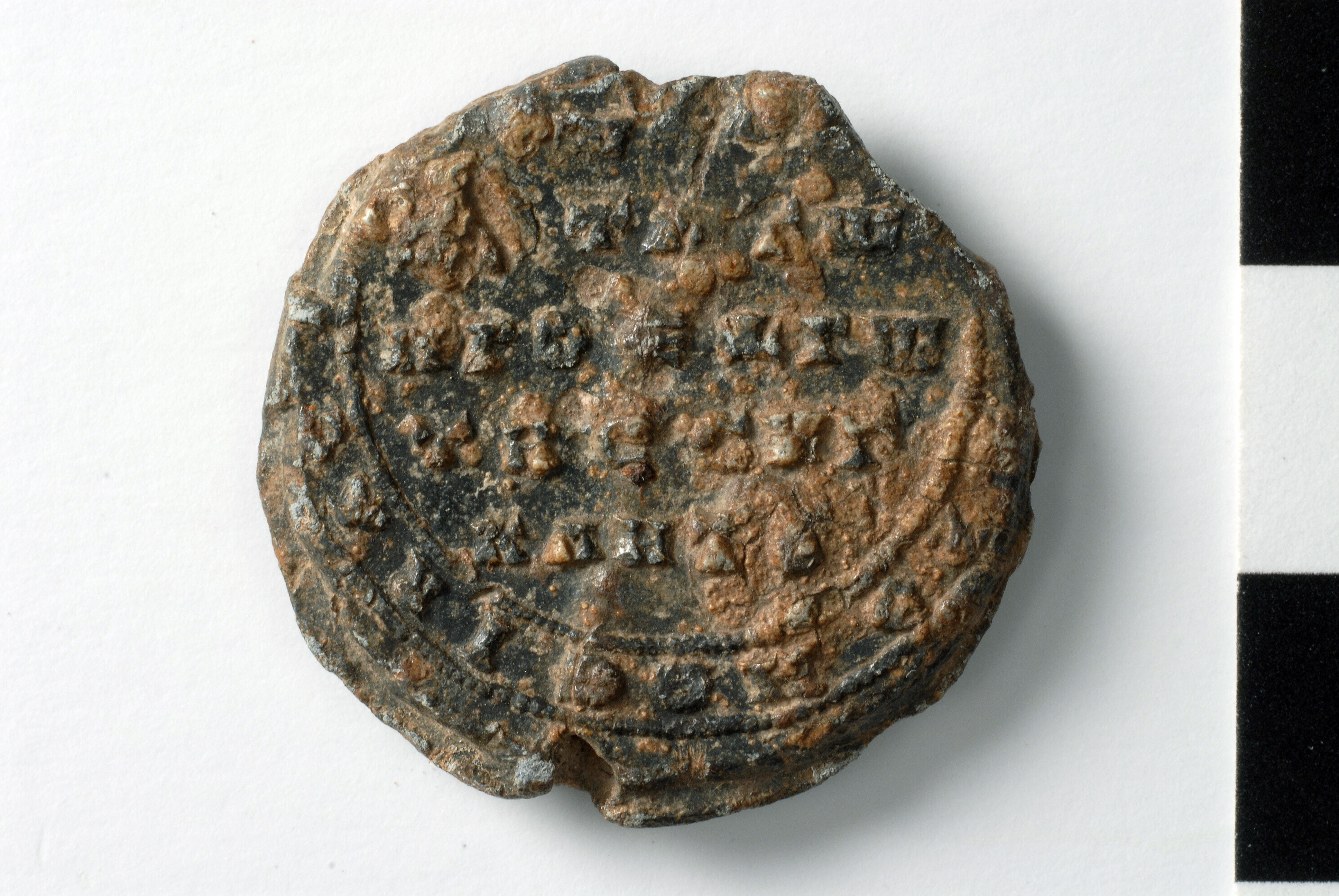Basil (Lekapenos), endoxotatos proedros of the Senate and parakoimomenos of the emperor (tenth century)
Obverse
An inscription beginning within concentric circles of dots along the circumference and continuing in the five lines inscribed in the field.
..εοηθειασιλ...
.ν..
..τατ
προερ
τησσυγ
κλητ
[Κ(ύρι)]ε βοήθει Βασιλ[είῳ ἐ]ν[δοξο]τάτῳ προέδρῳ τῆς συγκλήτου
Obverse
An inscription beginning within concentric circles of dots along the circumference and continuing in the five lines inscribed in the field.
..εοηθειασιλ...
.ν..
..τατ
προερ
τησσυγ
κλητ
[Κ(ύρι)]ε βοήθει Βασιλ[είῳ ἐ]ν[δοξο]τάτῳ προέδρῳ τῆς συγκλήτου
Reverse
Inscription of five lines. A border of pellets within concentric borders of dots.
...
ρΑκοιμ.
μεντφι
λοχρ,εσ
ποτου
[(καὶ) πα]ρακοιμ[ω]μέν(ῳ) τοῦ φιλοχρ(ίστου) δεσπότου
| Accession number | BZS.1947.2.828 |
|---|---|
| Diameter | 25.0 mm; field: 20.0 mm |
| Previous Editions | Oikonomides, Dated Seals, no. 69. |
Translation
Κύριε βοήθει Βασιλείῳ ἐνδοξοτάτῳ προέδρῳ τῆς συγκλήτου καὶ παρακοιμωμένῳ τοῦ φιλοχρίστου δεσπότου.
Lord, help Basil, most illustrious proedros of the Senate and parakoimomenos of the Christ-loving emperor.
Bibliography
- A Collection of Dated Byzantine Lead Seals (Open in Zotero)

Commentary
The owner of this seal was undoubtedly the eunuch Basil Lekapenos who was elevated to the rank of proedros of the Senate by the emperor Nikephoros II Phokas. Oikonomides reasoned that since the inscription mentions only one emperor, this seal should probably be dated between the accession of Phokas in 963 and the joint reign of Basil II and Constantine VIII that began in 976.